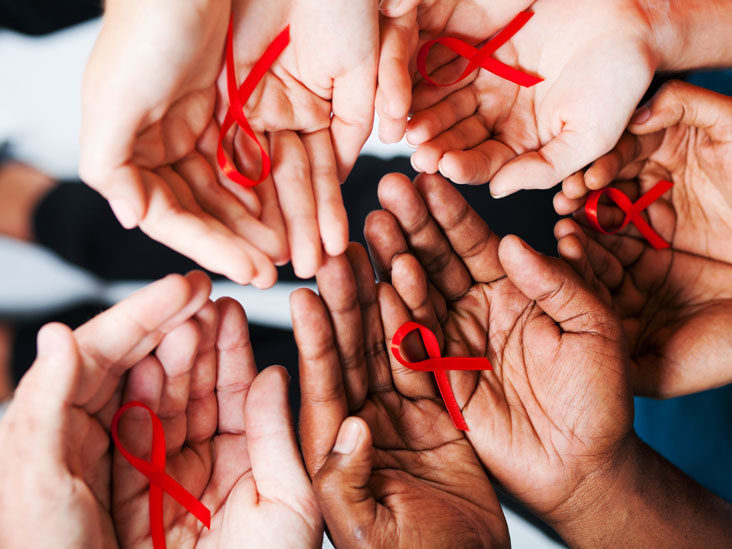
After 40 years of AIDS, Why we still don’t have an HIV vaccine?
Forty years ago, researchers described a mysterious case of five homosexual men who developed pneumonia caused by the Pneumocystis carinii fungus. Two of the five had already died.
This type of pneumonia usually only affects people with severe immunodeficiency, the researchers wrote in a weekly report on morbidity and mortality dated June 5, 1981. Three years later, scientists blamed AIDS for a virus called HIV, the human immunodeficiency virus. At an April 1984 press conference, US Health and Welfare Secretary Margaret Heckler told a news conference that vaccines to create protection against the virus would be ready to be tested within two years, promising that the protection would be activated.
The HIV pandemic, which appears to have started in Congo in the 1920s, has caused catastrophic losses in the meantime. By the end of 2019, more than 75 million people were infected worldwide. About 32.7 million people died. Without advances in antiviral treatment that could prevent infected people from dying of HIV and transmitting the virus to others, the number would definitely be much higher. So far, only three people have overcome HIV infection. In most cases, it lasts a lifetime.
This long-term infection is just one of the reasons why there is still no HIV vaccine. It is also a difficult virus to identify, with a tremendous ability to evade many variants and the immune system. And money is also an issue. The lack of an effective HIV vaccine contrasts sharply with the COVID-19 vaccine, which took less than a year to develop. “The funding was right,” said Susan Zolla-Pazner, an immunologist at the Icahn School of Medicine in Mount Sinai, New York City, for the development of the COVID-19 vaccine. Research funding for the HIV vaccine is provided in installments over a five-year period, making it difficult to efficiently distribute funding to get the vaccine on track. However, this funding stream has enabled advances in HIV research, some of which have allowed some COVID-19 vaccines to achieve rapid success.
For example, the technology behind Johnson & Johnson’s COVID-19 vaccination was first developed as a strategy to fight HIV to elicit a strong immune response. This injection uses a cold virus that has been modified to not cause illness. This transporter directs cells to produce the viral proteins needed to train the immune system to recognize invaders. Johnson & Johnson’s COVID-19 vaccine uses a virus called adenovirus 26. The first vaccine candidate for HIV used adenovirus 5. Unfortunately, clinical studies testing the HIV vaccine have shown that participants naturally infected with adenovirus 5 are more likely to be infected with HIV. The researcher stopped the process. They speculated that these participants were already immune to adenovirus 5, which weakened the vaccine’s defense response to HIV and therefore made them more susceptible to HIV.
The lack of a good HIV vaccine is not due to a lack of experimentation, says Mark Fineberg, a viral immunologist who is president and CEO of the New York City International AIDS Vaccine Initiative. “The work dedicated to the development of HIV vaccines has been the most demanding and creative to date.” Much of the difficulty in making a vaccine lies in the complex biology of the virus itself. One of the biggest challenges is the enormous genetic diversity of the HIV virus that infects people around the world. Like the coronavirus. which has variants that can be more easily transmitted or bypass parts of the immune system, there are variants of HIV. But “it’s a completely different world for HIV,” says Morgane Roland, a virologist with the Walter Reed Army Institute’s Military HIV Research Program in Silver Spring, Maryland.
That’s because the virus makes new copies of genetic blueprints at breakneck speed, and one person makes tens of thousands of new copies every day, says Rolland. Each of these new copies has, on average, at least a single mutation. Over the years, a person can make numerous changes in their body, but only a few can tell others.
The main problem with these vaccine variants is that mutations occur in some of the viruses that are attacking the immune system. These changes essentially help the virus to go into incognito mode. A good vaccine needs to elicit an immune response that can handle this wide variety in order to provide broad protection against infection. In addition, the virus uses various tactics to hide itself from the immune system. One of the tactics the virus uses is to cover part of the surface with a thick layer of sugar molecules. Many of these surfaces are prime targets for immune proteins called antibodies that bind to viral particles.




